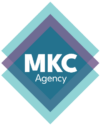If you run a Managed Service Provider (MSP) and you’re trying to grow, here’s some tough love: winging it isn’t a marketing strategy. Without a well-structured marketing plan, you’re stuck in reactive mode – chasing cold leads, hoping referrals roll in, and wondering why growth is stalling.
This guide will help you ditch the guesswork and create a marketing plan tailored specifically for your MSP business—one that attracts qualified leads, converts them, and keeps them coming back.
Step 1: Define Your Business Goals
Start with clarity. What do you actually want to achieve?
- Increase monthly recurring revenue (MRR)?
- Sign five new contracts this quarter?
- Expand into a new vertical like healthcare or legal?
Your goals should be SMART (Specific, Measurable, Achievable, Relevant, Time-bound). These guide every marketing move you make.
Step 2: Know Your Ideal Client
Not all leads are good leads. Define your ideal customer using a detailed buyer persona:
- Industry (e.g., SMBs in finance, healthcare, legal)
- Company size
- Tech challenges (cybersecurity gaps, poor network performance)
- Decision-makers (often a COO, office manager, or overwhelmed internal IT staff)
Interview current clients and use CRM data to identify patterns. The clearer the picture, the better your messaging.
Step 3: Audit Your Existing Marketing Assets
Before you build, assess what you already have:
- Is your website optimized for SEO and conversions?
- Do you have clear, client-focused messaging?
- What’s your current content strategy (if any)?
Identify gaps and opportunities. For example, if your blog hasn’t been updated since 2020, or you have zero lead magnets, it’s time to level up.
Step 4: Choose Your Marketing Channels
MSPs don’t need to be everywhere—they need to be where their prospects are. Focus on high-ROI channels:
- SEO & Website: Make sure your site ranks for MSP-related keywords in your area. Include service pages, case studies, and CTAs.
- LinkedIn: Thought leadership posts, direct outreach, and ad campaigns can drive real pipeline.
- Email Marketing: Build and nurture a list with newsletters, offers, and helpful content.
- Webinars & Events: Showcase expertise and engage local business leaders.
- Paid Ads: Use Google Ads for high-intent searches and LinkedIn Ads for targeting decision-makers.
Step 5: Create a Content Plan
Content is what drives traffic, builds trust, and educates prospects. Your MSP content plan should include:
- Blog posts about common tech challenges and solutions
- Client success stories and testimonials
- Downloadable resources (guides, checklists, audits)
- Video explainers and how-tos
Build a content calendar to stay consistent and tie each piece back to your goals.
Step 6: Track KPIs and Adjust
Your MSP marketing plan isn’t a “set it and forget it” situation. Monitor these key performance indicators:
- Website traffic and keyword rankings
- Conversion rates on landing pages
- Email open/click rates
- Qualified leads generated
- Cost per acquisition (CPA)
Use tools like Google Analytics, HubSpot, or SEMrush to track performance. Review monthly and tweak your tactics accordingly.
Writing an MSP marketing plan doesn’t have to be overwhelming. When you break it down into clear steps—goals, audience, channels, content, metrics—you’ll build a roadmap that drives real, repeatable growth.
Need help building your MSP marketing machine? MKC Agency specializes in creating ethical, scalable marketing strategies for MSPs. Let’s talk.

